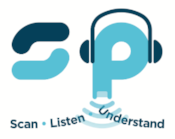National Read a Book Day
In Honor of National Read a Book Day, I am dedicating this blog post to Dr. Mary Wakefield. When I met Dr. Wakefield, I was in fourth grade reading at a first-grade level. One of her strategies was to convince my mother to purchase books that I wanted to read and then say nothing.
If the books sat in my room for days or weeks, let them sit. Dr. Wakefield understood early, that if a dyslexic student has a strong interest in a subject, they will find a way to consume the information.
My mother listened to her advice. With each Scholastic Book order, a stream of books on the topics of weather, hurricanes, tornados, along with a selection of biographies arrived. Quietly in my room, I sat next to my bed and explored these new treasures. For the next two years, I spent my summers working with Dr. Wakefield and helping her graduate students become skilled dyslexia teachers. During this time, my reading fluency increased two grade levels.
By sixth grade, the knowledge gained from reading dozens of books, became evident as my grades in history, science and language arts improved. Along with better grades, my reading fluency continued to improve while I had developed a healthy reading appetite which is now a bit of an obsession.
National Read a Book Day is also the day of empowerment for dyslexics, as, with each book we read, we gain knowledge and confidence.
Reading is a skill, and just like any other skill, daily practice and engagement helps improve overall reading fluency.
National Read a Book Day Advise to Help Your Dyslexic Child or Student
Dyslexia Help - University of Michigan
- Allow the child or student to select a book they wish to read (age appropriate).
- Promise to always purchase books and magazines, even comic books in areas of their interest. Think about it? Do you read books or magazines that bore you? Probably not, unless the material is required reading for work.
- Allow them personal space to read at their own pace. Chances are your child or student is picking up the book or magazine when no one is looking. Remember, the book topics need to align with their passions and interests.
- Make sure the book is at a comfortable reading level while challenging enough to provide a reading balance.
- Determine if assistive tech can help and if needed purchase a handheld text-to-read scanner, like C-Pen Reader Pen. Personally, I still believe printed books and magazines are the best choice.
Here’s another idea to help students improve their reading fluency, let them become the author of their own books. My son is dyslexic and when he was having a difficult time in first and second grade, I purchased sketch books, stickers, colors, and markers. He created short stories using Star Wars and truck stickers. When he was finished, it was his turn to read at night. He loved creating stories and then sharing his books.
At Scanning Pens, we love receiving stories about how our products C-Reader Pen and C-Pen Exam Reader help dyslexic students. Please share with us, your child’s or student’s favorite books, where they enjoy reading, and favorite authors.

